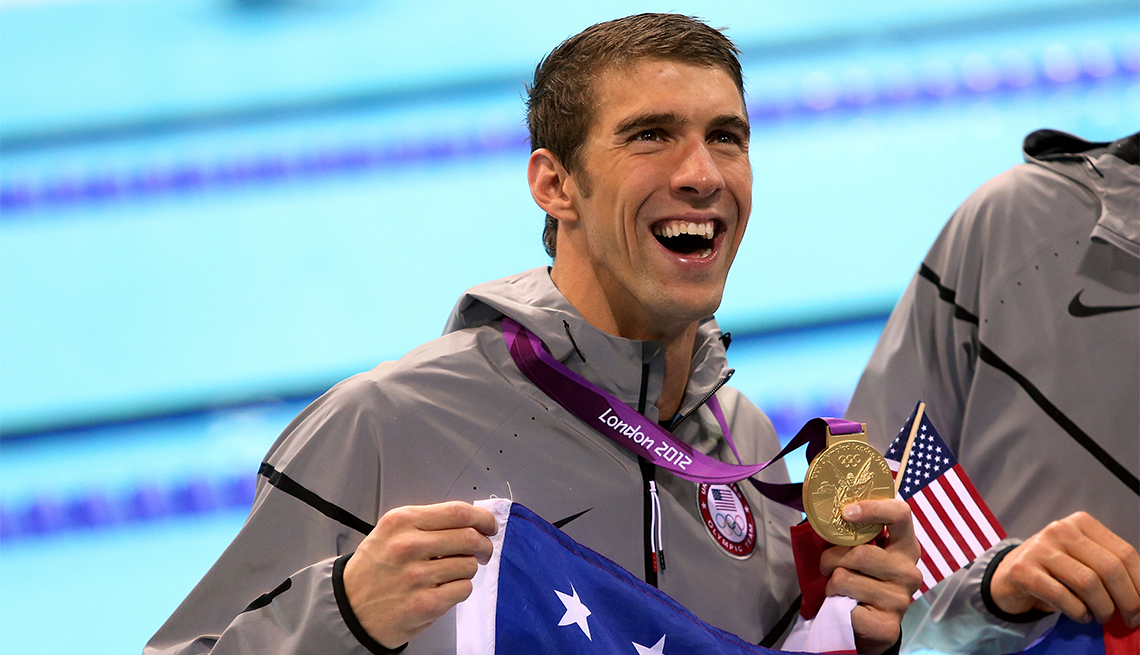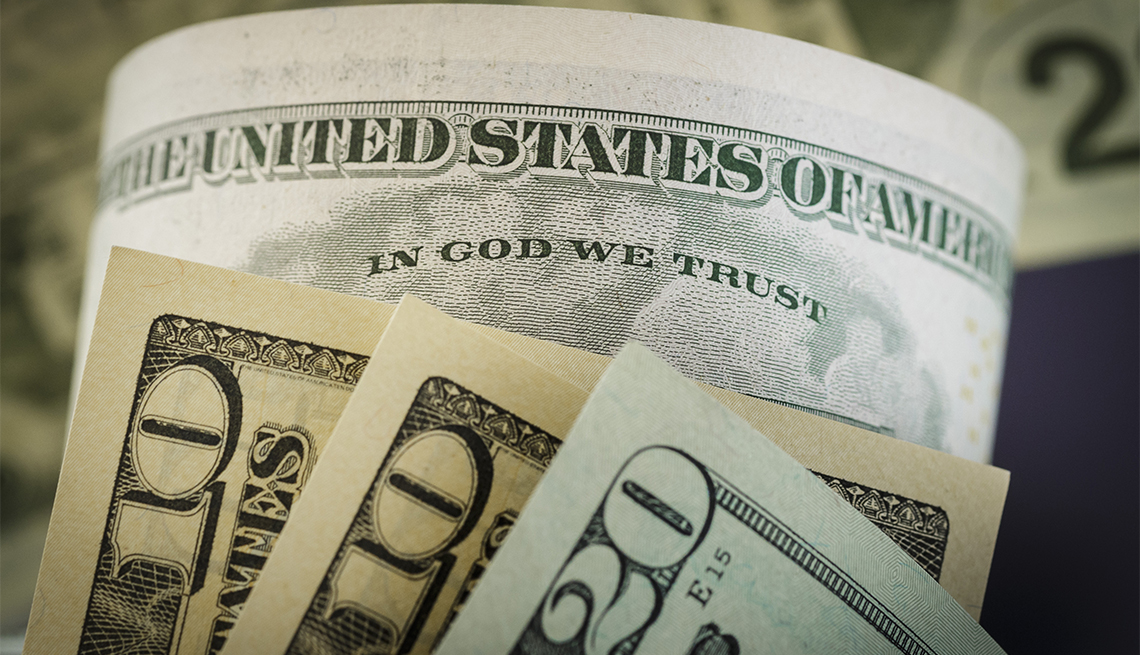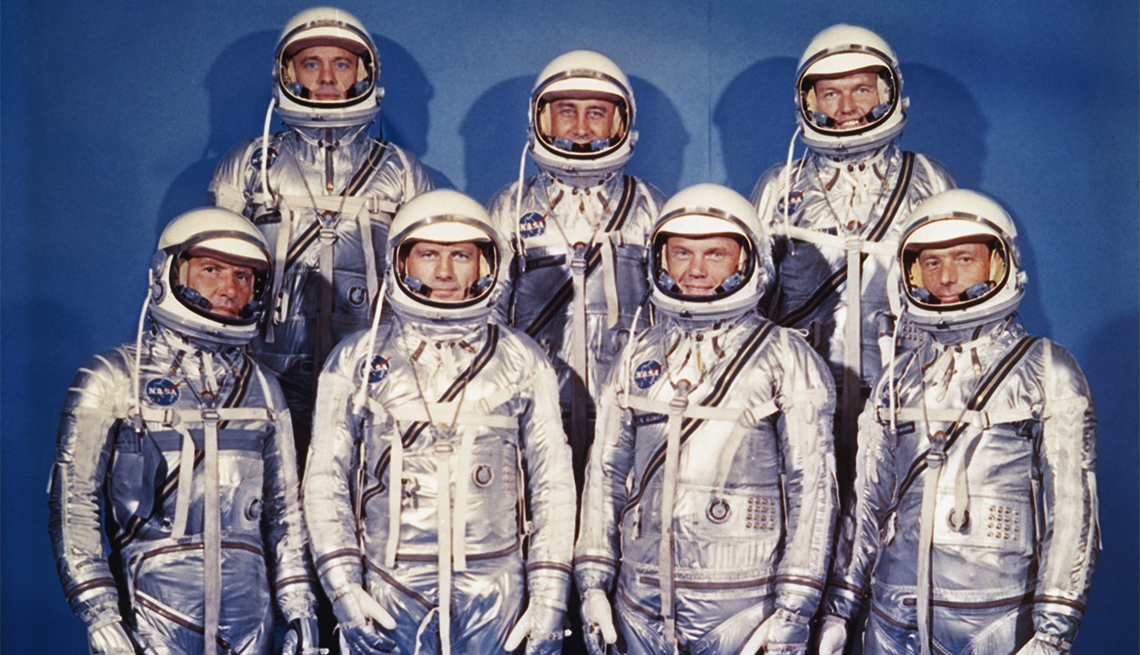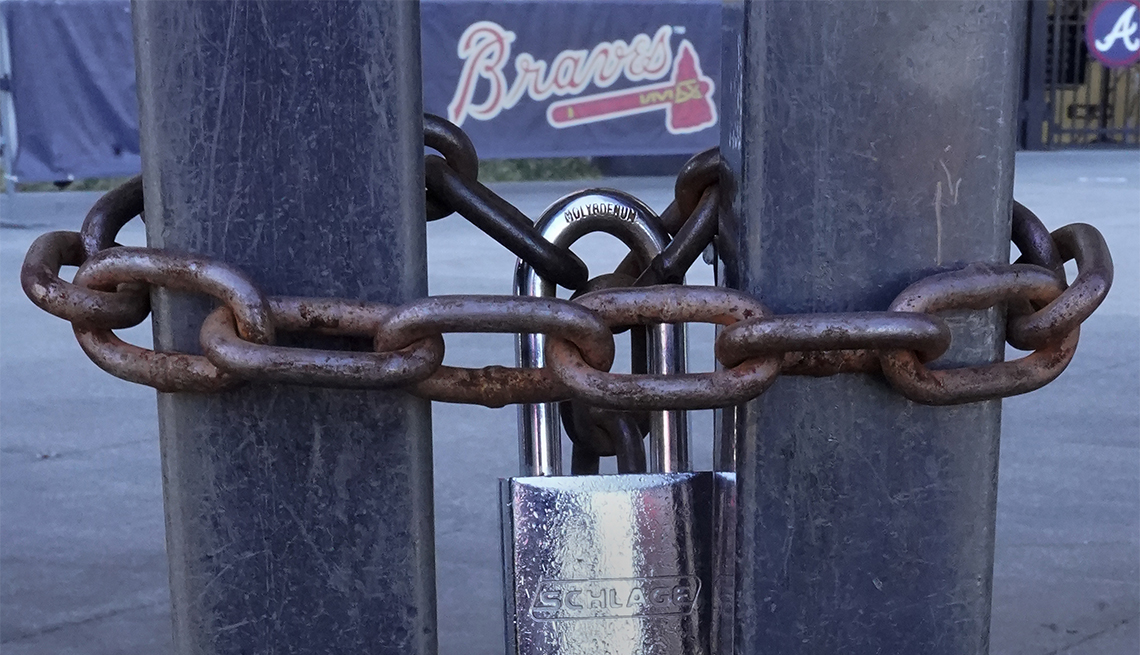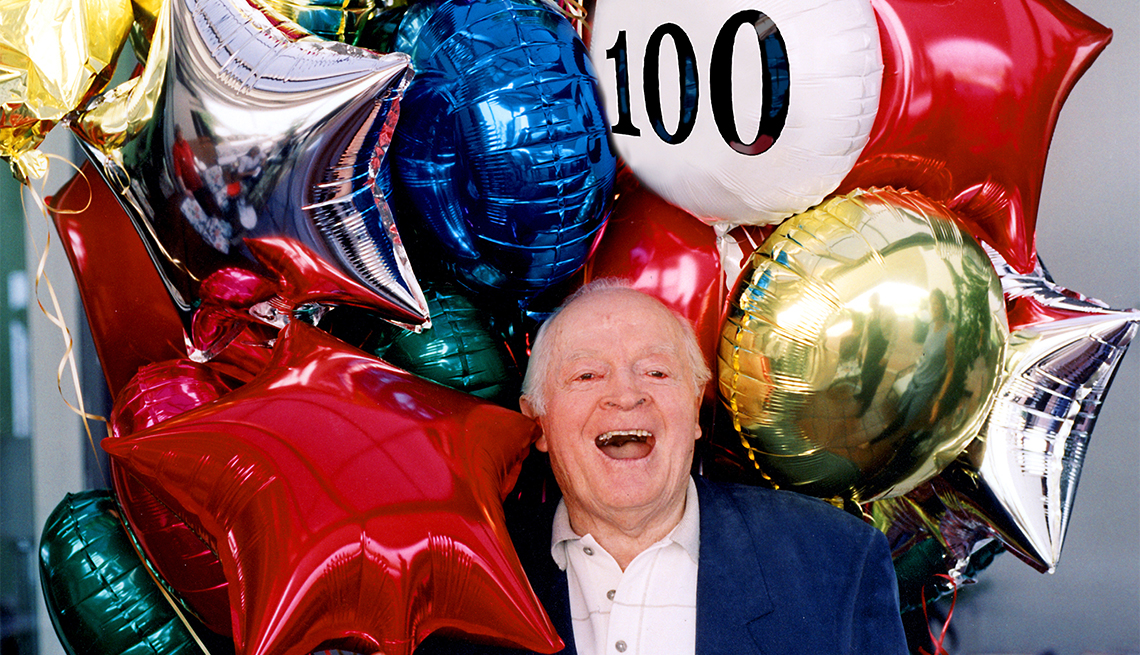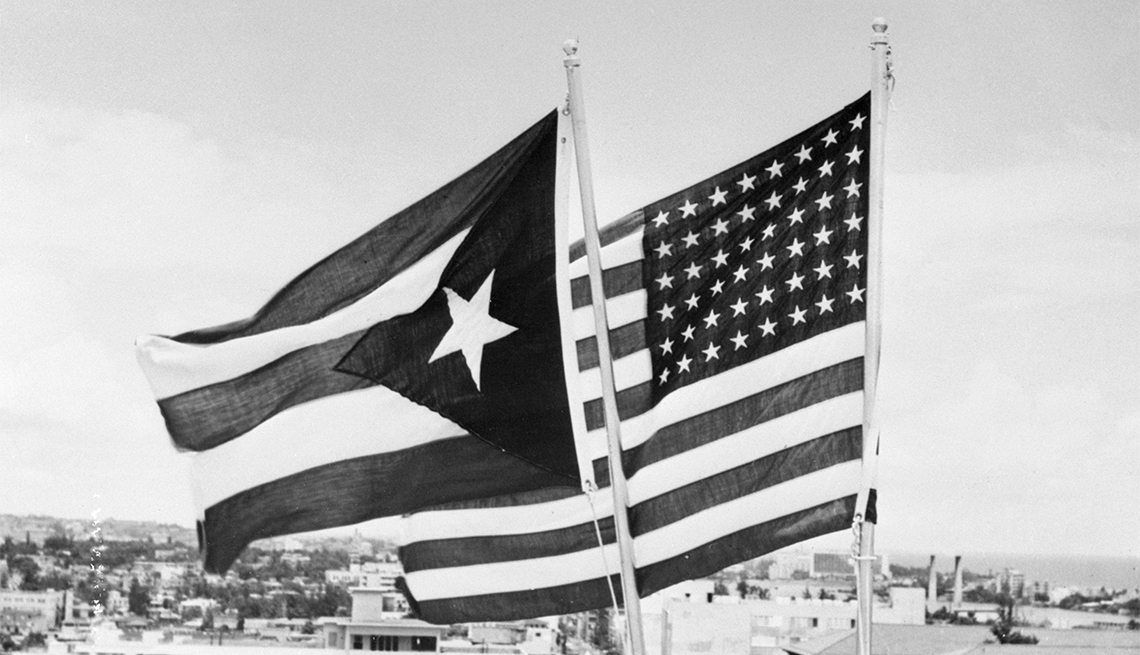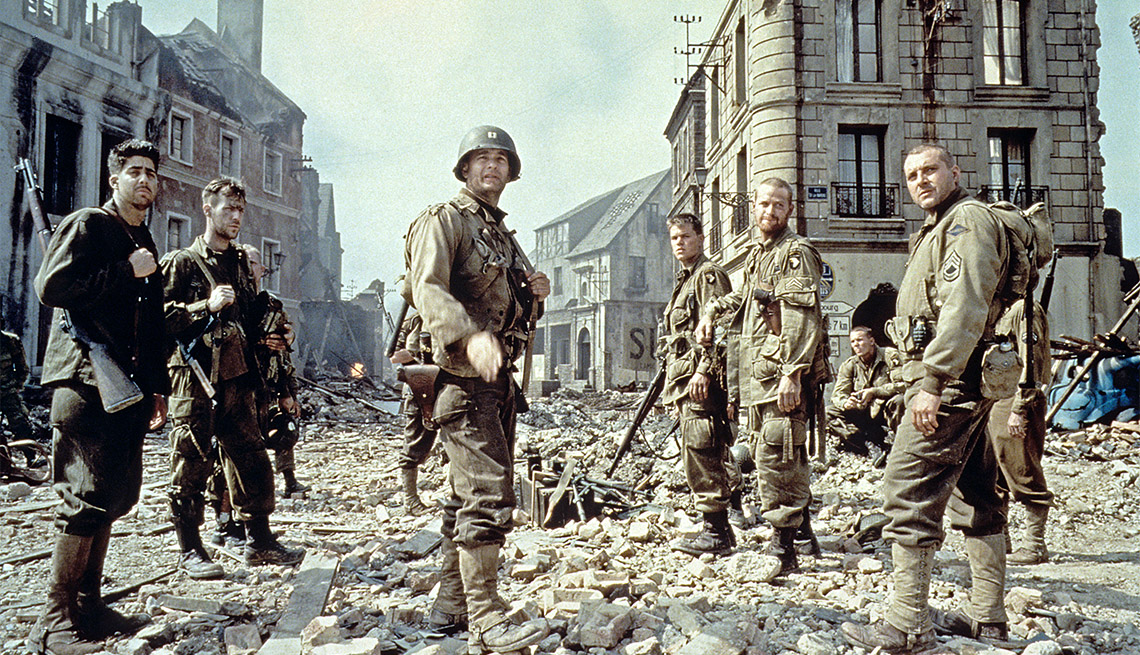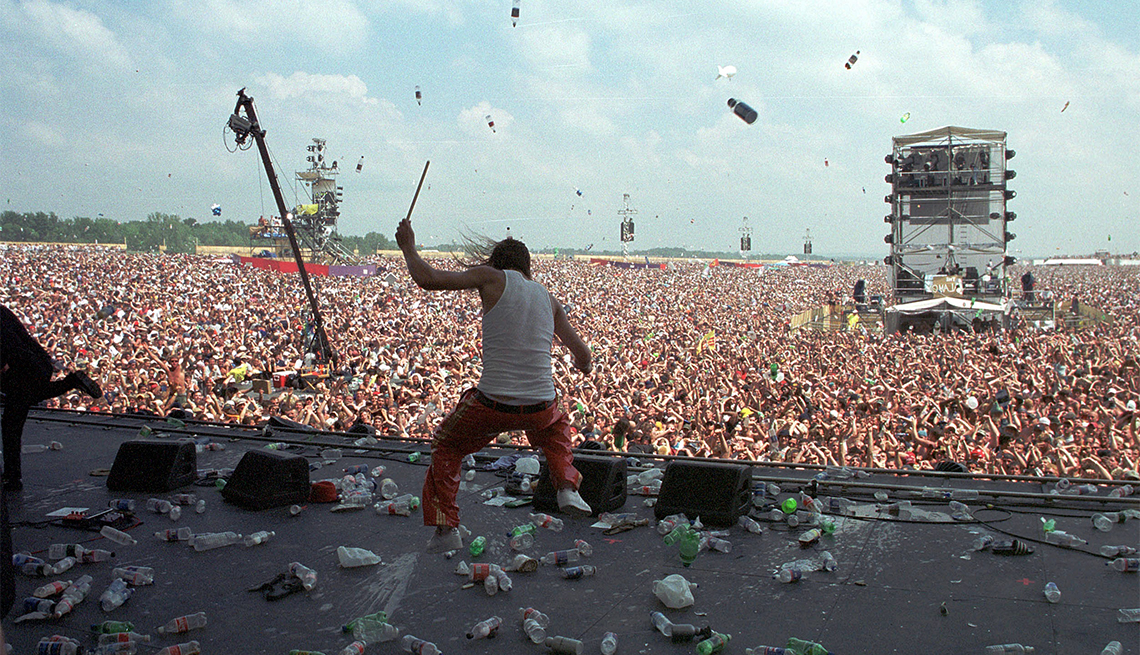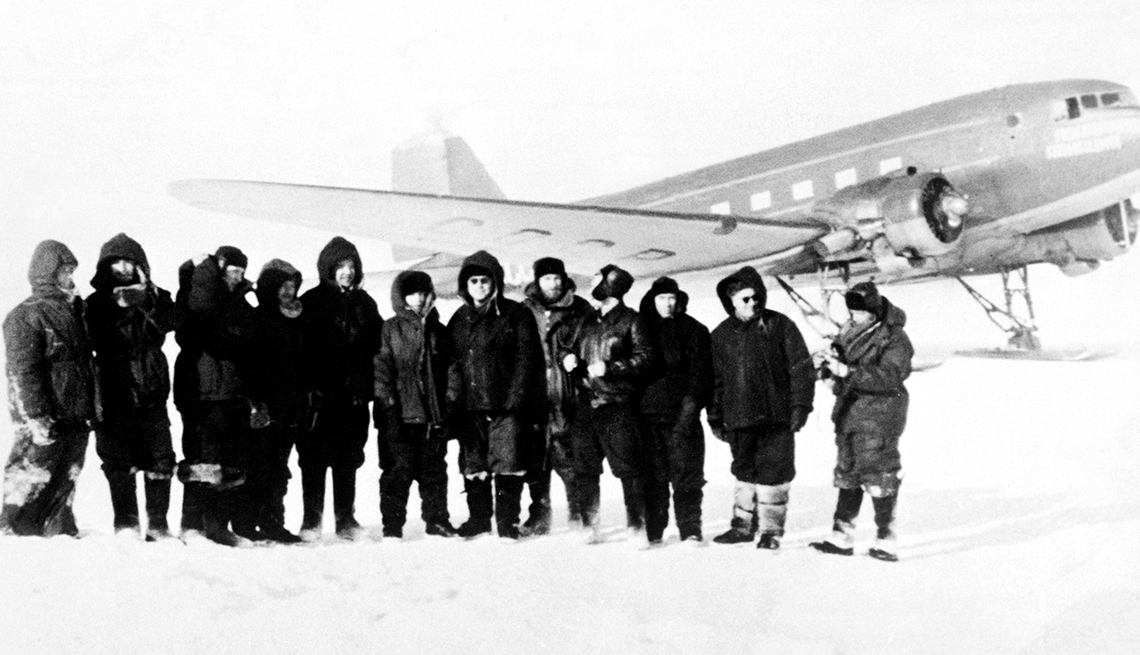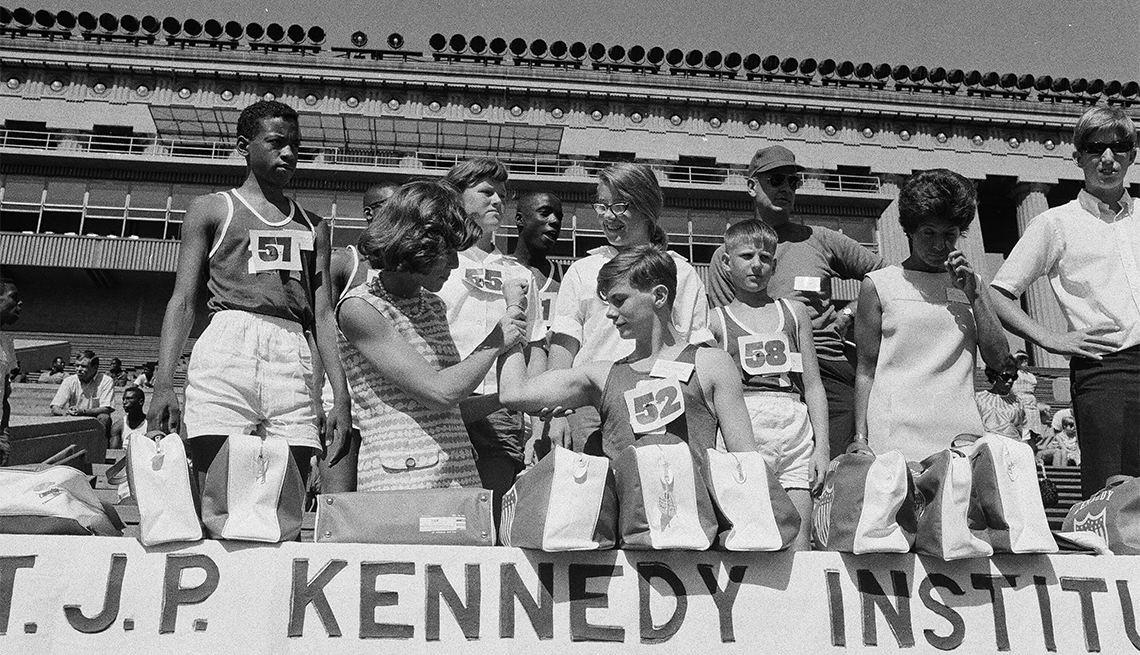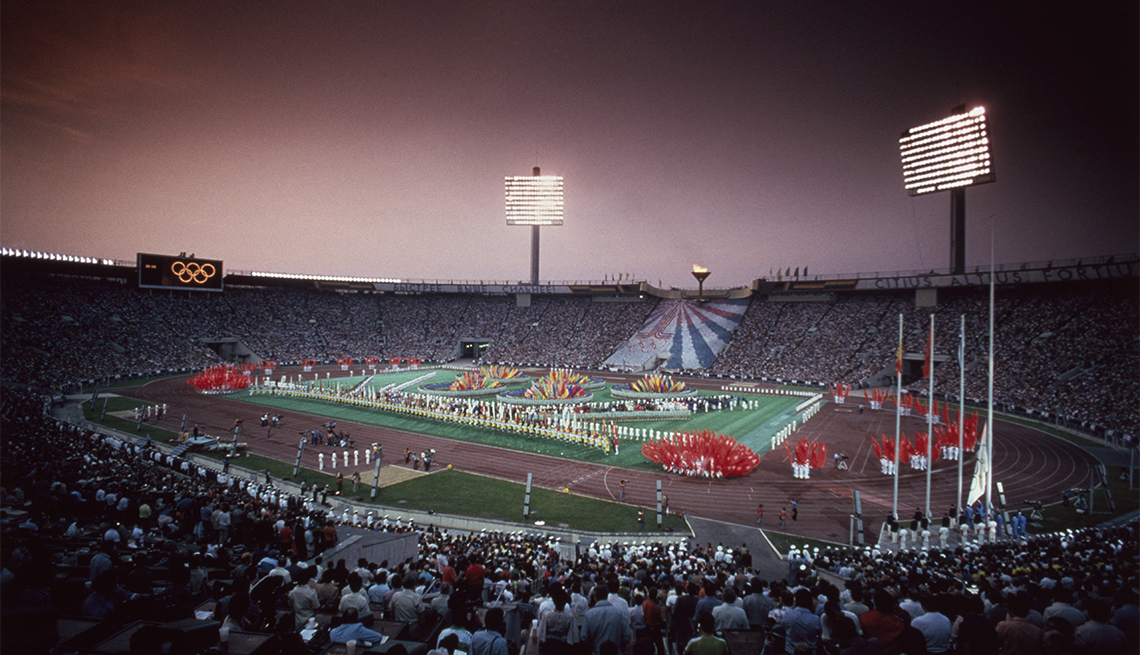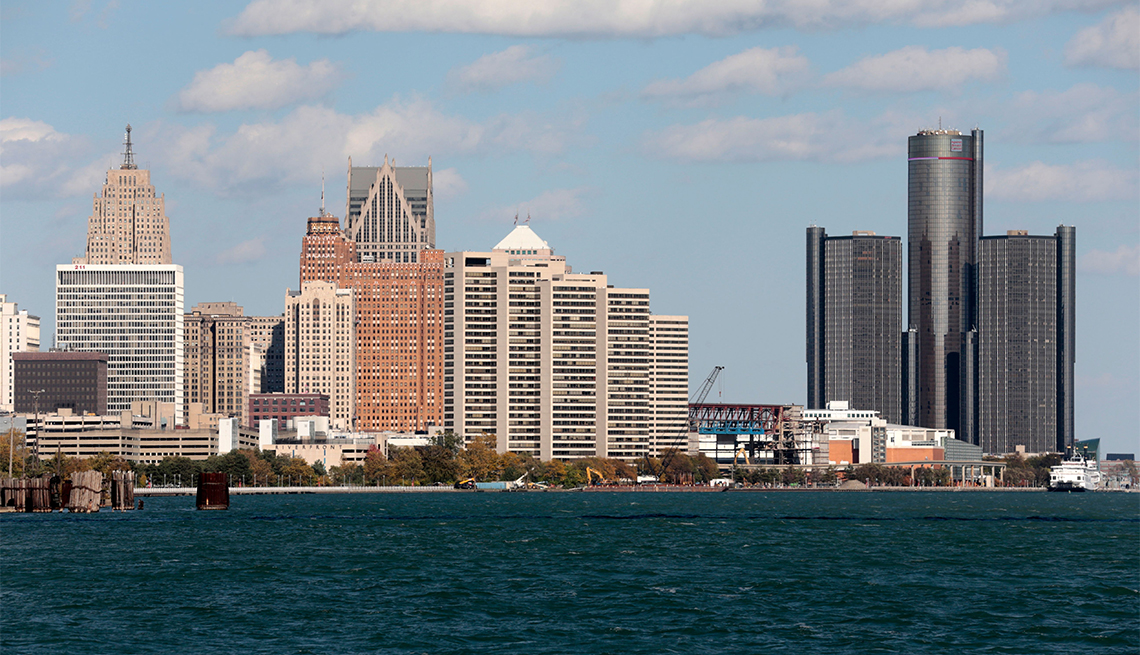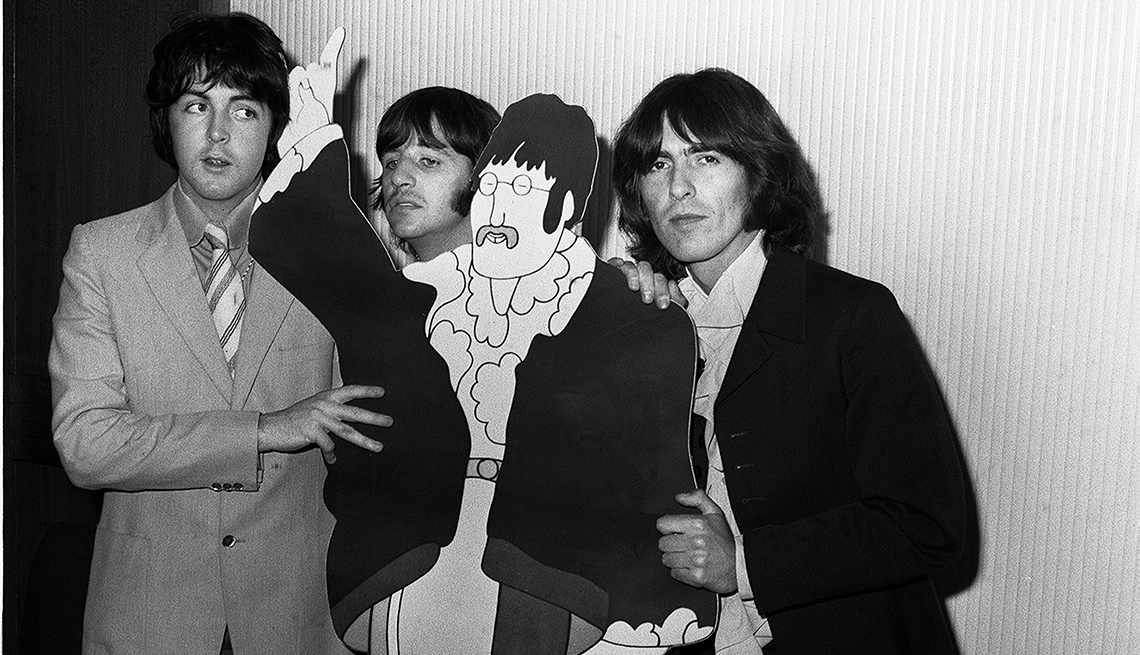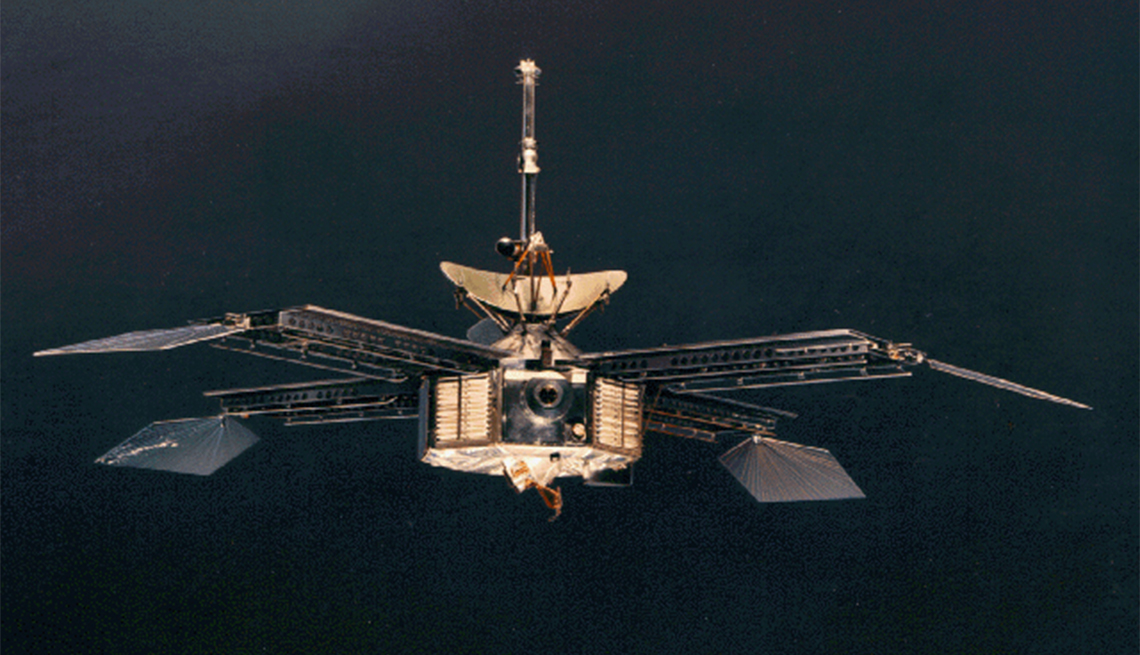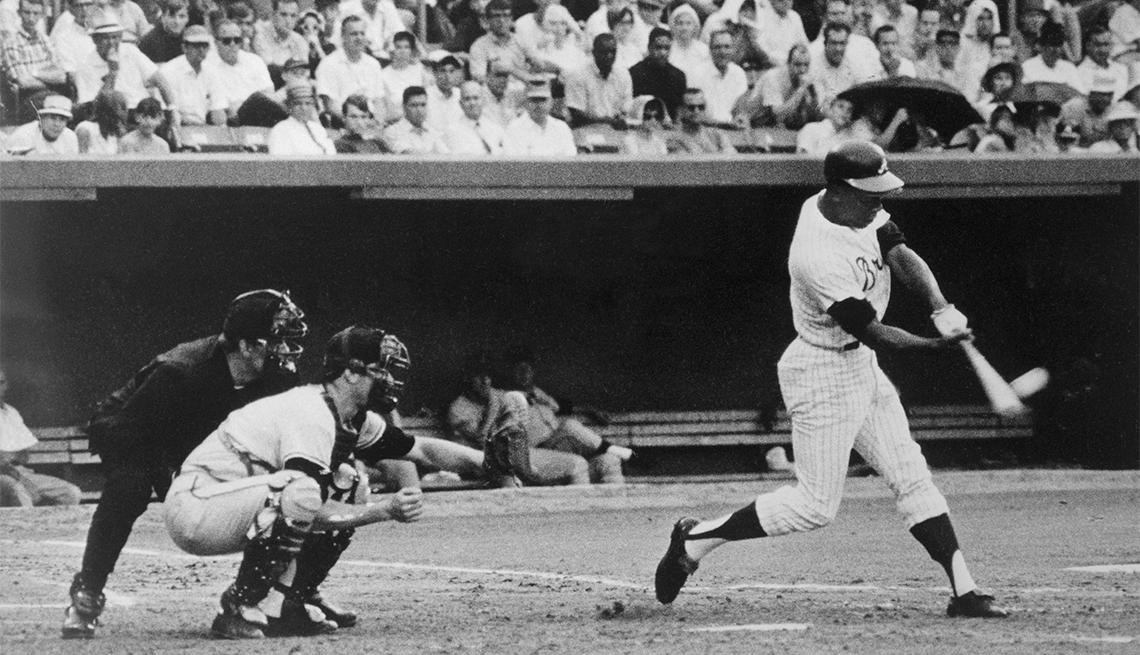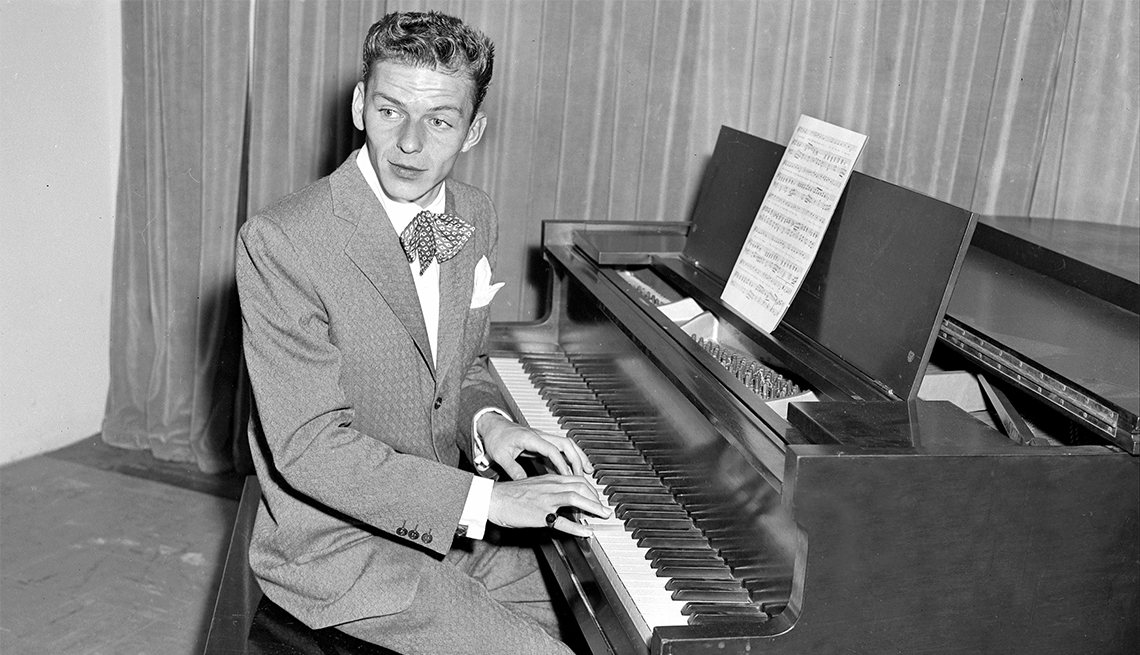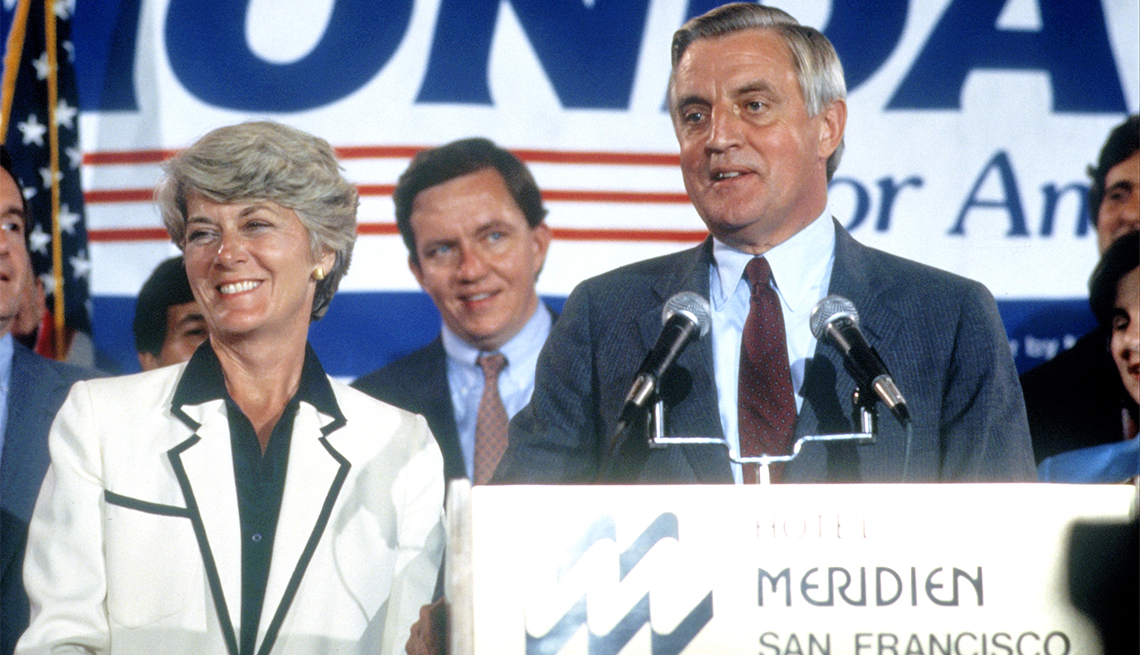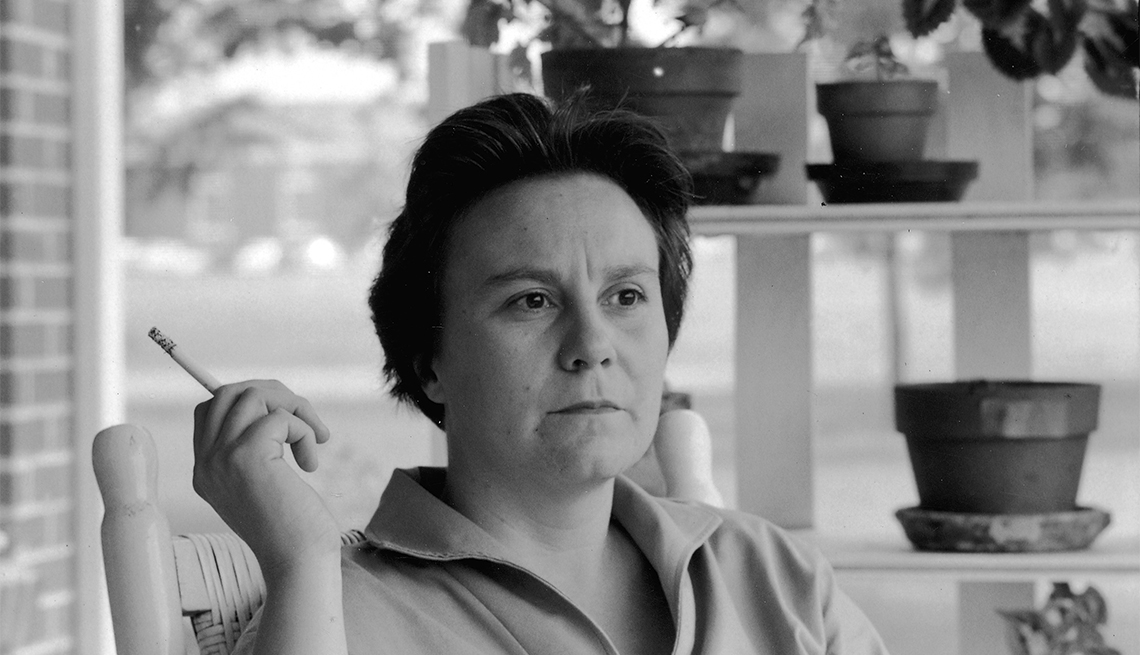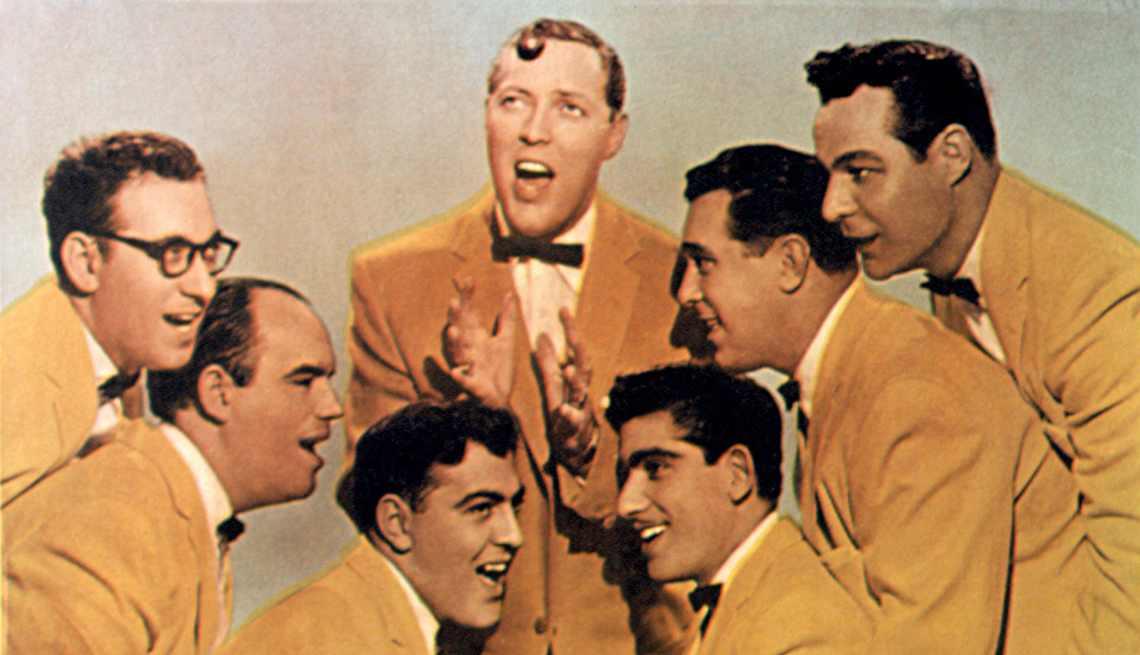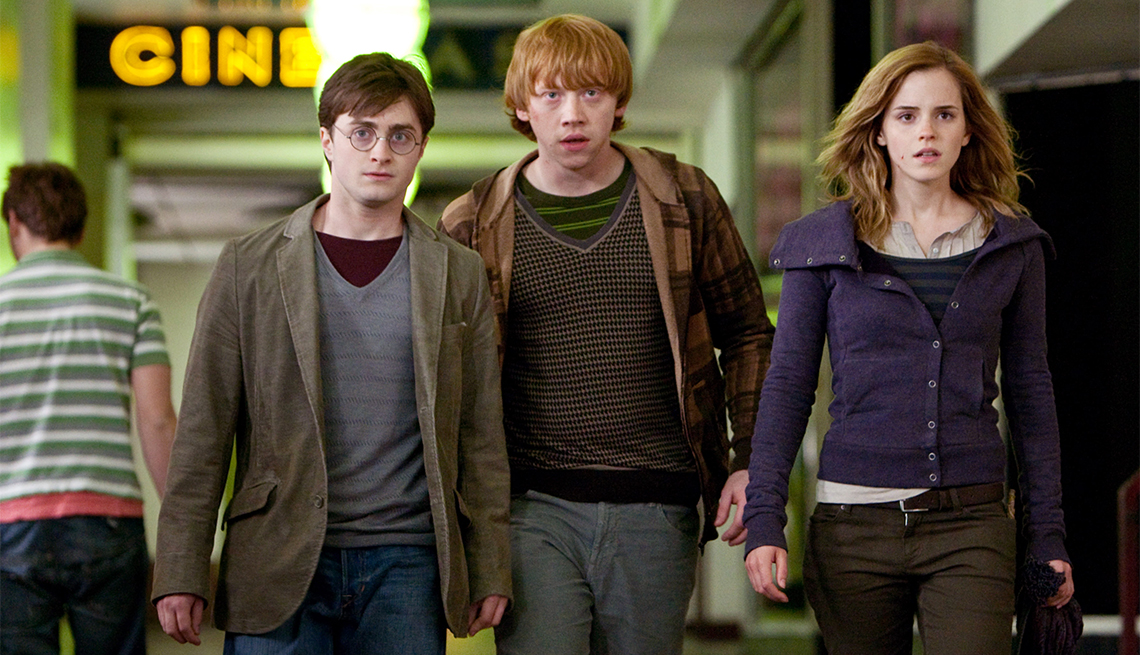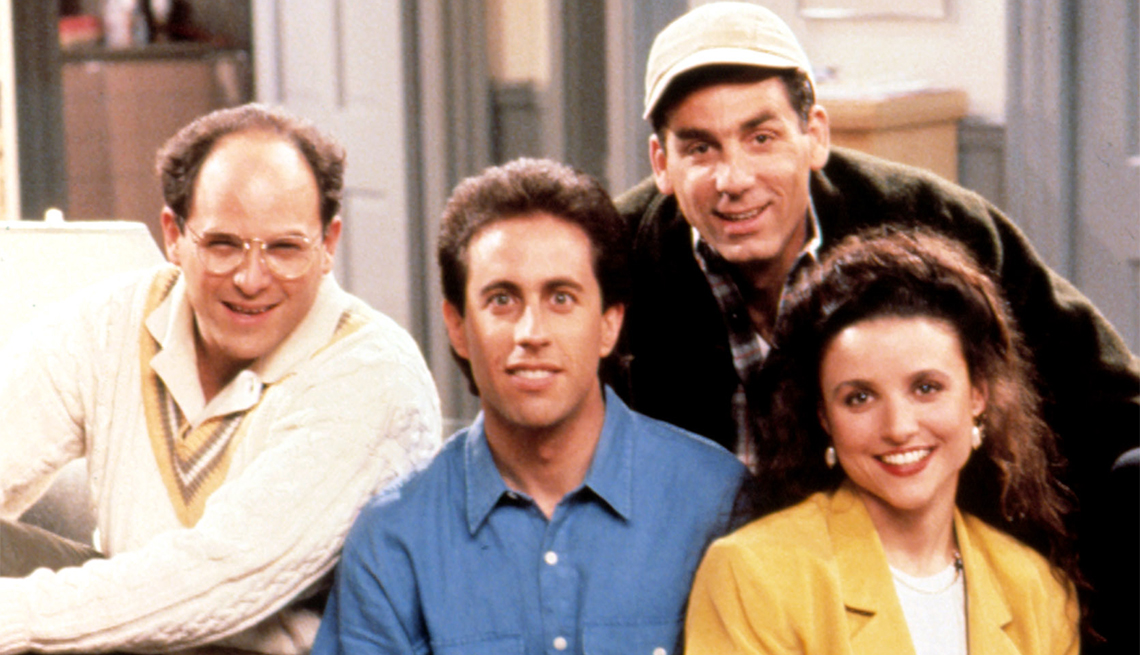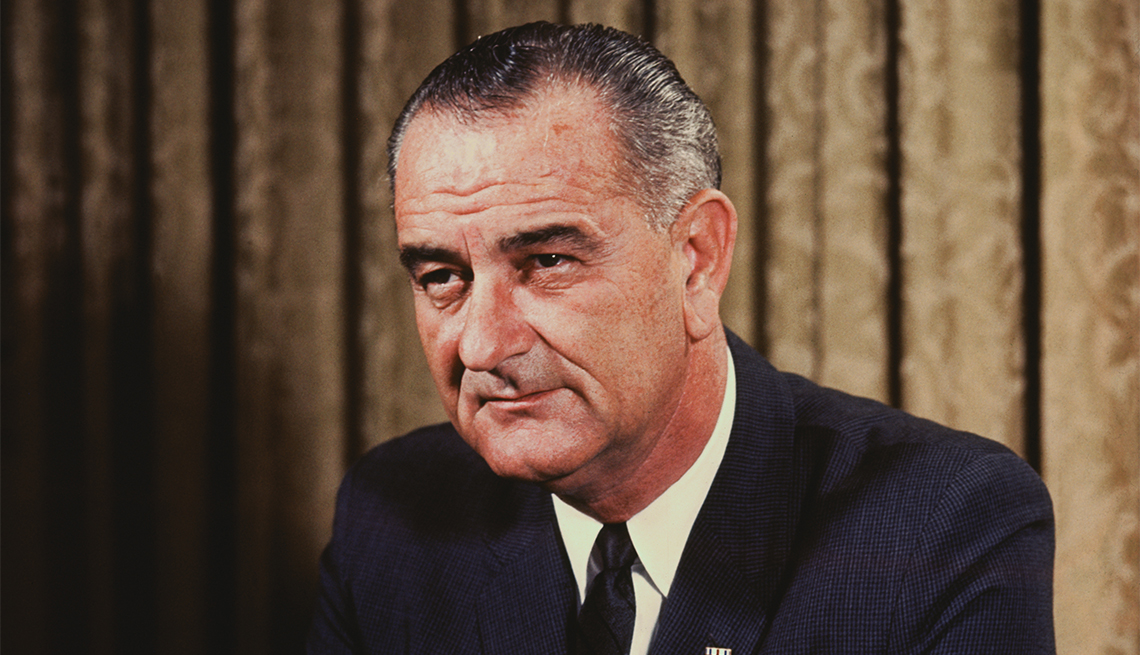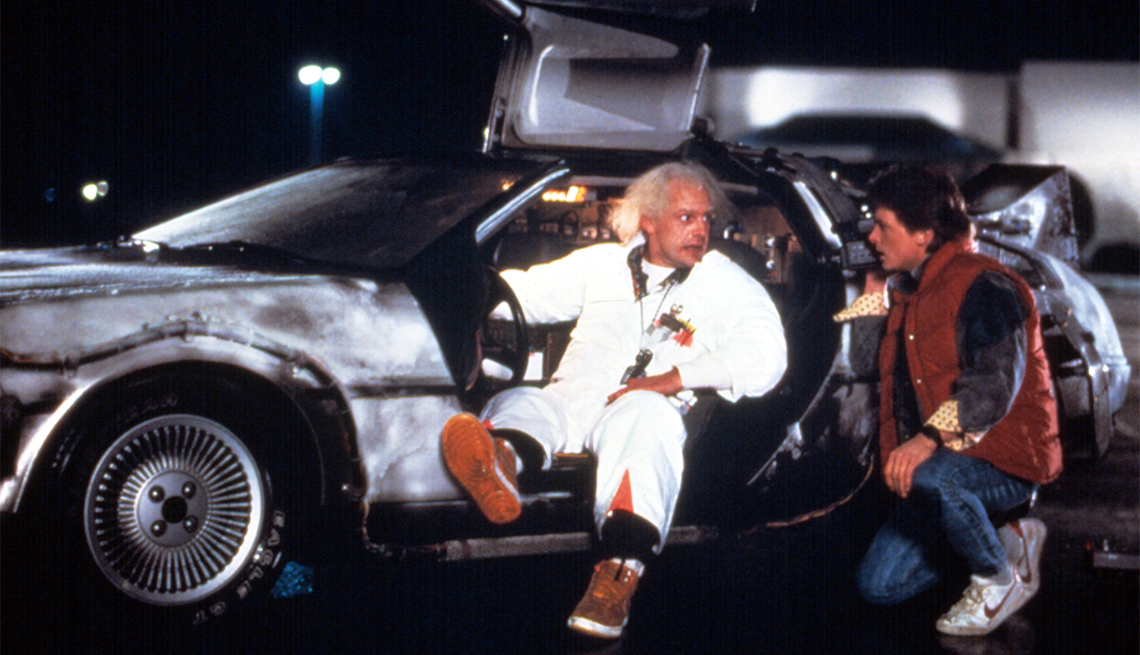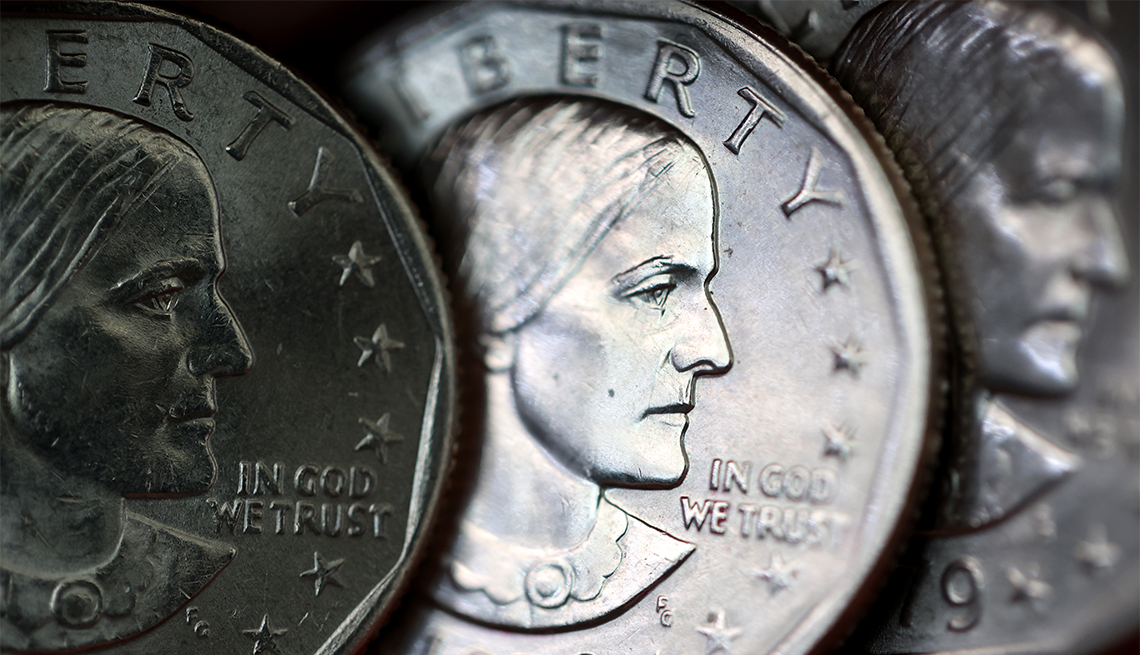July’s Today in Your History
A look at the events that shaped our lives, including the first woman nominated for president at a major party convention
AARP, July 2023
- |
- Photos
-
- 1 of
PHOTO BY: Press Association/AP Images
July 31: Michael Phelps captures his record-breaking 19th Olympic medal (2012)
For nearly 50 years, after her last win at the 1964 Summer Games in Tokyo, Soviet gymnast Larisa Latynina held the record for the most Olympic medals, with a commanding 18. That all changed on July 31, 2012. At the London Games, seemingly supernatural American swimmer Michael Phelps achieved his record-tying 18th medal, when he picked up the silver in the 200-meter butterfly. Later that day, he officially broke Latynina’s record with win number 19, a gold in the 4 x 200-meter men’s freestyle relay. “I’ve put my mind to doing something that nobody had ever done before,” Phelps said after the race. “This has been an amazing ride.” The 77-year-old Latynina gave an interview with Yahoo! Sports that week, in which she said via a translator, “Do I think I am still the greatest Olympian? Why yes, but that is my opinion.” At the age of 27, Phelps announced that the London Games would be his last, but he ultimately returned for his fifth Olympics, the Rio de Janeiro Games in 2016, at which he picked up six more medals (five golds and one silver), ending his illustrious career with 28 medals total. —Nicholas DeRenzo
-
- 2 of
PHOTO BY: Thomas Trutschel/Getty Images
July 30: “In God We Trust” becomes America’s official national motto (1956)
For nearly 175 years, the United States had an unofficial motto — the Latin E pluribus unum, or “Out of Many, One” — which had been selected by the Second Continental Congress in 1782 for the new nation’s seal. “In God We Trust” first began appearing on coins in 1864 during the Civil War, and it started to make a comeback in the 1950s during the Eisenhower administration, when the president began promoting spirituality as a way to fight back against Communism during the Cold War. In 1954, for instance, Ike promoted the inclusion of “under God” in the Pledge of Allegiance, saying during a Flag Day speech, “In this way we are reaffirming the transcendence of religious faith in America’s heritage and future; in this way we shall constantly strengthen those spiritual weapons which forever will be our country’s most powerful resource in peace and war.” On this day in 1956, the president signed into law a bill that made “In God We Trust” the country’s official motto, and moving forward all paper currency would have to feature the phrase in capital letters. In the decades since the motto was adopted, debates have continued about its appropriateness with regards to the separation of church and state. —Nicholas DeRenzo
-
- 3 of
PHOTO BY: NASA/Getty Images
July 29: President Eisenhower signs legislation to establish NASA (1958)
In the wake of World War II, as the East and West were embroiled in the Cold War, the Soviets took an early lead in the burgeoning space race with the October 1957 launch of Sputnik 1 into orbit. When the U.S. Navy tried to launch its own satellite shortly afterward, the much-anticipated event ended in a two-second flight and explosion. Something, it was clear, had to change. In April 1958, President Dwight D. Eisenhower sent a special note to Congress calling for the creation of a civilian aeronautics and space agency that he believed would make the process more streamlined and efficient than leaving it up to the military. The May launch of Sputnik 3 lit a fire under the legislators, and by June 16, both the House and the Senate had passed bills authorizing the establishment of the National Aeronautics and Space Agency (NASA). Sixty-five years ago today, Eisenhower officially signed the act into law, and NASA was established. The new agency, which absorbed the earlier National Advisory Committee for Aeronautics, officially began operations on Oct. 1 with 8,000 employees and a budget of $89 million — or about $903 million in today’s dollars. —Nicholas DeRenzo
-
- 4 of
PHOTO BY: John Bazemore/AP Images
July 28: Major League Baseball players announce they’re going on strike, and it will eventually cancel the rest of the season (1994)
In early 1994, a battle broke out between Major League Baseball executives and players, as the owners of smaller teams began pushing for a salary cap. The Major League Baseball Players Association adamantly opposed the idea, and on July 28, the union’s executive board authorized a strike that would officially begin on Aug. 12 if the situation couldn’t be resolved. August came around, and when the owners failed to pay $7.8 million toward the players’ pension and benefit plan, it became clear that negotiations would prove fruitless. The season officially came to a screeching halt on Aug. 12, kicking off a 232-day strike that included the cancellation of the rest of the 1994 regular season, the playoffs and the World Series. At the time, it was the longest work stoppage in American professional sports history. When the new year came around, baseball executives announced a plan to use nonunion and minor league replacement players, a controversial move that led to an injunction being filed by U.S. District Judge (and now Supreme Court Justice) Sonia Sotomayor, who restored the terms of MLB’s previous labor agreement. The 1995 season officially started on April 25, but when all was said and done, the strike ended up costing the owners an estimated $580 million and the players $230 million. —Nicholas DeRenzo
-
- 5 of
PHOTO BY: Eddie Sanderson/Getty Images
July 27: Bob Hope dies at the age of 100 (2003)
Twenty years ago today, the entertainment industry lost one of its most enduring legends when actor and comedian Bob Hope died at the age of 100 at his home in Toluca Lake, California. Born in England in 1903, he became known for his one-liners, his buddy comedies and his decades spent entertaining troops overseas on USO tours, part of a career that lasted about seven decades before he retired from public life in 1998. Upon the announcement of Hope’s death, President George W. Bush released a statement while he was standing outside of Air Force One. “Today America lost a great citizen,” he said. “We mourn the passing of Bob Hope. Bob Hope made us laugh, and he lifted our spirits. Bob Hope served our nation when he went to battlefields to entertain thousands of troops from different generations.” Later that week, Hope was laid to rest at San Fernando Mission Cemetery, following a private funeral service attended by about 100 family members and friends. Hope’s daughter Linda told a story that showed how much he held on to his humor until the very end of his life: His wife, Dolores, she said, had recently asked the comedian where he wanted to be buried. His response? “Surprise me.” —Nicholas DeRenzo
-
- 6 of
PHOTO BY: Tom Williams/AP Images
July 26: Hillary Clinton becomes the first woman officially nominated for president at a major party convention (2016)
On this date in 2016, after a bruising primary battle with Vermont Senator Bernie Sanders, Hillary Clinton made history when she officially became the first woman nominated for president by a major American political party. At the Democratic National Convention in Philadelphia, Maryland Senator Barbara Mikulski — the first female Democrat elected to the Senate in her own right, not to replace her husband — was the person to officially nominate Clinton, saying, “[On] behalf of all the women who have broken down barriers for others, and with eyes toward the barriers ahead, I proudly place Hillary Clinton’s name in nomination to be the next president.” The nomination was seconded by legendary civil rights activist and Georgia Representative John Lewis. The event wasn’t without its drama, as the party went through with the formal state-by-state roll call vote — a move that gave Sanders supporters the chance to voice their discontent. Nevertheless, South Dakota’s 15 votes cast for Clinton officially put her over the threshold of needed delegates: 2,382. After the vote, Sanders took to the convention floor, surrounded by cheering supporters, and announced, “I move that all votes cast by delegates be reflected in the official record, and I move that Hillary Clinton be selected as the nominee of the Democratic Party for president of the United States.” —Nicholas DeRenzo
-
- 7 of
PHOTO BY: Bettmann Collection/Getty Images
July 25: Puerto Rico becomes a commonwealth of the United States (1952)
In 1951, after years of nationalist revolts and independence uprisings, Puerto Rico held a referendum to decide if the island territory would draft a new constitution and redefine its relationship with the United States to allow for greater self-rule. Seventy-six percent of voters favored the measure, and a new constitution was proclaimed by the governor of Puerto Rico on this date in 1952 — exactly 54 years to the day after the U.S. invasion of the island. The constitution afforded Puerto Rico autonomous commonwealth status. Puerto Ricans don’t pay federal income taxes, but they also don’t get to vote for the president or have voting representatives in Congress. July 25 soon came to be celebrated as Puerto Rico Constitution Day, replacing an earlier holiday known as Occupation Day. Puerto Rico’s status remains a hot topic to this day, with different factions arguing for either complete independence or statehood, following the path taken by Alaska and Hawaii. In a nonbinding referendum in 2017, 97 percent of voters favored statehood, although less than a quarter of the voting population actually participated in the election. —Nicholas DeRenzo
-
- 8 of
PHOTO BY: DreamWorks/Everett Collection
July 24: Steven Spielberg releases his critically acclaimed Saving Private Ryan (1998)
Twenty-five years ago today, Steven Spielberg’s World War II epic Saving Private Ryan stormed into American cinemas, and it was instantly hailed as one of the most realistic and harrowing accounts of modern warfare ever filmed. The wide release took place just a few days after the low-key world premiere in Hollywood, which included no red carpet or fancy after-party, in deference to the seriousness of the subject matter. “It would have been inappropriate,” Dreamworks marketing chief Terry Press said at the time. Audiences were stunned by the gruesome realism of the bloody opening scene, which depicted American troops landing on Omaha Beach in Normandy on D-Day, and critics started predicting that the film could sweep the Oscars; The New York Times even started its article about the film’s premiere with the line, “Is the Oscar race already over?” The film went on to gross $482 million at the worldwide box office, and while it did end up raking in a more-than-respectable 11 nominations at the Academy Awards, Saving Private Ryan famously lost out on the top prize to Shakespeare in Love. In the end, it took home five trophies, including best director for Spielberg. Nevertheless, its legacy lives on, and Spielberg’s war classic ranks number 71 on the American Film Institute’s list of the 100 best films of all time. —Nicholas DeRenzo
-
- 9 of
PHOTO BY: Elise Amendola/AP Images
July 23: Tiger Woods becomes the youngest player to complete golf’s Grand Slam (2000)
On this date in 2000, the wunderkind golf phenom Tiger Woods won the British Open championship, held at Scotland’s famed St. Andrews Links, by a commanding eight shots. With that win, Woods officially completed golf’s career Grand Slam, winning all four major championships — the Masters, the U.S. Open, the British Open and the PGA Championship. He joined a fraternity of only four other players who had pulled off the feat during their careers — Gene Sarazen, Jack Nicklaus, Ben Hogan and Gary Player — and it was even more impressive because he did it by age 24, making him the youngest to achieve the milestone. “I’ve always envisioned that I would have the Slam eventually,” Woods said of his accomplishment. “I knew I would have it. And to have it at such a young age just — it makes it even that much more special. But to beat some of the greatest champions this game has to offer and to play this great game of golf and to be able to win at this venue and to complete the Slam at this venue, that’s what makes it so special.” Woods’ 15 major championship wins place him second behind Nicklaus, who earned a record 18 during his long career. —Nicholas DeRenzo
-
- 10 of
PHOTO BY: KMazur/Getty Images
July 22: The controversial Woodstock ’99 begins in New York (1999)
In the summer of 1999, concert promoters hoped to recapture the magic of the original Woodstock music festival with a 30th anniversary event held at Griffiss Air Force Base in Rome, New York. More than 200,000 music fans attended the multiday festival, which officially kicked off on July 22 with a Thursday night pre-show that included performances by the likes of George Clinton & P-Funk, G. Love & Special Sauce, and the String Cheese Incident. Unlike the rock-heavy roster of stars who performed at the original Woodstock, the ’99 lineup represented a true cross section of genres, including such acts as Willie Nelson, Elvis Costello, James Brown, Sheryl Crow, Jewel and Alanis Morissette, plus a preponderance of then-popular nu-metal and rap-rock groups, like Korn and Limp Bizkit, that played to a crowd that was infamously rowdy and violent. The festival is perhaps best remembered, however, for descending into uncontrollable chaos: a lack of drinking water, disgusting sanitary conditions, sexual assault, overpriced food, extreme heat and fires, all of which resulted in three deaths. The violence and ugliness of that weekend has loomed large over the decades, inspiring a slew of recent documentaries, including HBO’s Woodstock 99: Peace, Love and Rage and Netflix’s Trainwreck: Woodstock ’99. —Nicholas DeRenzo
-
- 11 of
PHOTO BY: Marka/Getty Images
July 21: The world's lowest temperature, -128.6ºF, is recorded in Antarctica (1983)
The year 1983 saw the release of the classic film The Big Chill, but on the bottom of the planet, an even bigger chill was setting in. That’s because, 40 years ago today, Soviet researchers at Antarctica’s Vostok Station witnessed the lowest air temperature ever recorded on Earth — an astonishingly frigid -128.6ºF. How did it get so cold? The station sits more than 11,000 feet above sea level on a high plateau, and this location sees clear skies, long periods of calm air and an absence of solar radiation, all of which aid in keeping temperatures low. The record was confirmed by the Arctic and Antarctic Research Institute in Leningrad. Vostok had actually held the previous coldest-temperature record, -127ºF, which was recorded on August 24, 1960. To find the location of the hottest temperature ever recorded on Earth, you’d have to travel to California’s aptly named Furnace Creek Ranch, in Death Valley, where a temperature of 134.1ºF was recorded almost 70 years earlier, on July 10, 1913. —Nicholas DeRenzo
-
- 12 of
PHOTO BY: Chicago Sun-Times Collection/Getty Images
July 20: The first Special Olympics takes place at Chicago’s Soldier Field (1968)
Throughout the 1950s and ’60s, Eunice Kennedy Shriver — the sister of JFK, RFK and Teddy Kennedy — began fighting for the rights of people with intellectual disabilities. In 1962, she even started a summer day camp in her own suburban D.C. backyard where young people with disabilities could compete in sporting events. Fifty-five years ago today, following years of Eunice’s lobbying, the first International Special Olympics Summer Games were held at Soldier Field in Chicago, a joint venture between the Kennedy Foundation and the Chicago Park District. One thousand athletes from the United States and Canada gathered at the stadium, and a 17-year-old named James kicked off the ceremony by carrying a torch and lighting a 45-foot-high flame that honored John F. Kennedy. After each competition, athletes were given gold, silver and bronze medals, and all participants received a special Illinois Sesquicentennial commemorative medal, celebrating 150 years of Illinois statehood. “Today’s Chicago Special Olympics Games have not been organized as a spectacle,” Eunice said that day during a press conference. “They are not being conducted just for fun. The Chicago Special Olympics prove a very fundamental fact … that exceptional children can be exceptional athletes … that through sports they can realize their potential for growth.” —Nicholas DeRenzo
-
- 13 of
PHOTO BY: Jean-Yves Ruszniewski/Getty Images
July 19: Sixty-five countries boycott the Moscow Summer Olympics due to the invasion of Afghanistan (1980)
The Soviet Union’s December 1979 invasion of Afghanistan was met with widespread condemnation abroad, and the international community took the opportunity to voice their displeasure the following year when Moscow hosted the Summer Olympics. When the opening ceremonies were held on this date in 1980, 65 countries decided to boycott the games, following the lead of President Jimmy Carter. “It’s very important for the world to realize how serious a threat the Soviets’ invasion of Afghanistan is,” Carter said at the time, arguing that the games should be moved from Moscow if the Soviet troops didn’t withdraw. Of course, some Western nations still participated, including Great Britain, France, Italy and Sweden, but many of the participants made their own small forms of protest. Some refused to attend the opening ceremonies, and others decided to fly the Olympic flag and use the Olympic hymn during medal ceremonies instead of their own flag and national anthem. In the end, with much of their major competition sitting out the games, the Soviets took home 80 gold medals and 195 medals total — one of the most dominant showings in Olympics history. Four years later, when Los Angeles hosted the Summer Olympics, the Soviet Union kept their athletes home, declaring that the West’s strongly anti-Communist views posed a danger to their team. —Nicholas DeRenzo
-
- 14 of
PHOTO BY: Jeff Kowalsky/Getty Images
July 18: Detroit becomes the largest U.S. city to ever file for bankruptcy (2013)
Ten years ago today, on July 18, 2013, Detroit became the largest city in American history to declare bankruptcy, after falling into debt that was estimated at up to $20 billion. Municipal bankruptcy is an incredibly rare phenomenon. In fact, between 2008 and 2012, only 0.6 percent of eligible towns and cities decided to take that route when faced with financial problems. Michigan Governor Rick Snyder had appointed an emergency financial manager to come up with a solution and ultimately decided to approve the bankruptcy filing once it became clear that there were no other workable solutions. The former automotive manufacturing hub had been in decline for decades, with a population that dropped from 1.8 million in 1950 to about 700,000. “This decision comes in the wake of 60 years of decline in the city, a period in which reality was often ignored,” wrote Snyder in a letter posted with the filing. “I know that many will see this as a low point in the city’s history. If so, I think it will also be the foundation of the city’s future.” After more than a year in bankruptcy, the city ended up dropping about half of its debt, and both the state and private foundations and companies — including Chrysler, Ford and General Motors — invested millions to help with worker pensions. —Nicholas DeRenzo
-
- 15 of
PHOTO BY: Mirrorpix/Getty Images
July 17: The Beatles’ animated film Yellow Submarine premieres in London (1968)
Fifty-five years ago today, the Beatles released their surreal and psychedelic animated feature Yellow Submarine, which premiered at the London Pavilion on Piccadilly Circus. With a soundtrack of Beatles classics, the wacky film follows the Fab Four as they try to save the underwater Pepperland from the music-hating Blue Meanies. At that world premiere screening, John Lennon brought Yoko Ono; George Harrison was accompanied by his wife, Patti; and Ringo Starr attended with his wife, Maureen Starkey; but Paul McCartney came solo. Three days later, his fiancée, Jane Asher, announced on BBC television that their relationship was over. The band was joined by other musical legends of the time, including Keith Richards and members of The Who, and after the screening they all partied at the Royal Lancaster Hotel, which renamed its in-house disco Yellow Submarine for the occasion. The film proved to be a rollicking critical success (it currently holds a 97 percent on Rotten Tomatoes), and John Lennon said in a 1980 interview that it was his favorite of the Beatles films. Yellow Submarine went on to win a New York Film Critics Circle Special Award and was nominated for a Grammy for Best Original Score. —Nicholas DeRenzo
-
- 16 of
PHOTO BY: AFP/Getty Images
July 16: The record-breaking Mont Blanc Tunnel opens between France and Italy (1965)
On this date in 1965, a major engineering feat debuted in Europe with the opening of the 7.3-mile-long Mont Blanc Tunnel — the longest vehicular tunnel in the world at the time. Connecting Italy and France, it cut through the heart of the Alps, under the highest mountain in Europe outside of Russia. After the two countries agreed to construct the tunnel, in 1949, Italian crews began the project in 1958, with the French following shortly behind, eventually meeting up underground in August 1962. When completed, the tunnel dramatically reduced travel times, cutting 30 miles off the route from France to Turin and 60 miles from the route to Milan. Of course, the construction project was not without its delays and disasters, including an avalanche that swept through the Italian camp. “It was a hard slog, harder than had been expected by the men who plot these things on the drawing-board,” Geoffrey Moorhouse wrote in The Guardian that week. “Rotten stone, floods and other hazards slowed up the Italians in particular, and when a hole was finally shoved through from end to end, in August, 1962, it was 14 months behind program. It had also cost the lives of more than 20 men.” Nevertheless, the mood on July 16 was decidedly celebratory, with a ceremony presided over by the Italian president, Giuseppe Saragat, and the French president, Charles de Gaulle. —Nicholas DeRenzo
-
- 17 of
PHOTO BY: CORBIS/Getty Images
July 15: Mariner 4 sends back the first pictures of the surface of Mars taken from space (1965)
Part of NASA’s unmanned space probe program, Mariner 4 was launched in November 1964, and after a 228-day journey, it finally completed its first flyby of Mars. On July 15, the craft made its closest approach to the red planet, coming within 6,118 miles of the surface, and it collected data about the planet’s atmosphere and radiation. But for folks back home, the mission was remembered for something a bit more magical: Mariner 4 captured the first photographs ever taken of another planet from space. The camera collected 21 pictures and the data was stored on the on-board tape recorder until it could be transmitted back to Earth. So how did they get the shots? Each comprised 40,000 dots, which could appear in one of 64 shades of gray, between pure white and pure black, and each of the shades was represented in binary, with numbers from zero to 63. It took nearly nine hours to send the code for each image back to Caltech’s Jet Propulsion Laboratory. In the end, the mission captured less than 1 percent of the surface of Mars, and Time magazine described the images as “grainy and ill-defined, a blur of white curving across a black background.” But they represented one of the biggest successes of the era of early space exploration. “While all the world watched and waited,” the Time article continued, “the ambitious timetable of U.S. space exploration had been put to its most demanding test. And the high, undulating whine of JPL’s computers seemed to change subtly into a cry of exaltation. Mariner had made it.” —Nicholas DeRenzo
-
- 18 of
PHOTO BY: Bettmann Collection/Getty Images
July 14: Hank Aaron hits his 500th home run (1968)
On this date in 1968, 34-year-old Atlanta Braves slugger Hank Aaron nabbed the 500th home run of his professional career in a game against the San Francisco Giants. The three-run homer landed him as the eighth member of the illustrious 500 home run club, which counted among its members Babe Ruth, Jimmie Foxx, Mel Ott, Ted Williams, Willie Mays, Mickey Mantle and Eddie Mathews. After rounding the bases, Aaron was greeted at home plate by his teammates and Braves president Bill Bartholomay, who presented him with an award, and Aaron jokingly apologized, “I’m sorry I waited so long to hit it.” Hammerin’ Hank later ended his career with a total of 755 home runs, besting the record of 714 set by Babe Ruth, and he’d hold on to that title until 2007, when Barry Bonds scored home run number 756. On that occasion, Bonds released a statement, thanking his predecessor: “Hank Aaron, thank you for everything you ever taught us, for being a trailblazer through adversity and setting an example for all of us African-American ballplayers that came after you. Being able to grow up and have the idols and role models I did, help shape me for a future I could have never dreamed of.” —Nicholas DeRenzo
-
- 19 of
PHOTO BY: Larry Froeber/Getty Images
July 13: Frank Sinatra records his first single (1939)
Before he became one of the biggest entertainers of the 20th century, Frank Sinatra began to make a name for himself in the 1930s, appearing on his first radio broadcast with The Hoboken Four in September 1935 on an amateur talent competition that he won. Bandleader Harry James heard him singing on another broadcast and invited him into the recording studio. On this date in 1939, backed by the Harry James orchestra, the 23-year-old future Ol’ Blue Eyes laid down his first recorded tracks, the singles “Melancholy Mood” and “From the Bottom of My Heart” on the Brunswick Records label. Neither of the songs charted. In September of that year, Sinatra received his first major review, when critic George T. Simon wrote in Metronome magazine, “Featured throughout are the very pleasing vocals of Frank Sinatra, whose easy phrasing is especially commendable.” Of those initial recordings in 1939, the cultural critic Pete Hamill later wrote in his book Why Sinatra Matters, “On the earliest recorded vocals with the James band, Sinatra sounds uncertain, unformed, but he does have a distinctive voice. It is certainly not another imitation of [Bing] Crosby. But on each succeeding date, he gets closer to what he will become, expressing the feeling of loneliness in a new way, within the context of a modern swing band. Those earliest records are like talented first drafts of a good first novel.” —Nicholas DeRenzo
-
- 20 of
PHOTO BY: Sonia Moskowitz/Getty Images
July 12: Walter Mondale selects Geraldine Ferraro as his running mate during the 1984 election (1984)
On this date in 1984, Walter Mondale, presumptive Democratic presidential nominee, made history when he announced Geraldine A. Ferraro as his running mate — making the representative from Queens the first woman to appear on a major party ticket. The 48-year-old daughter of Italian immigrants had an undeniably interesting résumé, having worked as a teacher and assistant prosecutor before joining the House of Representatives in 1978. Mondale called her rise in politics “really the story of a classic American dream,” and told his crowd of supporters and journalists, “History speaks to us today. Our founders said in the Constitution, ‘We the people’ — not just the rich, or men, or white, but all of us.” Of the historic honor, Ferraro enthused, “I am absolutely thrilled.” Her selection was seen by Democratic advisers as a way to gain support among blue-collar and union voters in industrial states like New York, Illinois, Pennsylvania and Ohio, but the gamble failed to pay off in the end: That November, Mondale and Ferraro only won his home state of Minnesota and the District of Columbia, with President Ronald Reagan handily securing a second term. It would be another 24 years before another woman, Alaska governor Sarah Palin, appeared on the presidential ticket of a major American political party. —Nicholas DeRenzo
-
- 21 of
PHOTO BY: Donald Uhrbrock/Getty Images
July 11: Harper Lee publishes To Kill a Mockingbird (1960)
The American literary canon welcomed one of its most beloved works when, on this date in 1960, first-time Alabama novelist Harper Lee published To Kill a Mockingbird. A childhood friend of Truman Capote, Lee was given a large sum of money by her good friends Michael and Joy Brown so she could quit her job and focus instead on writing a book; she submitted the manuscript of Go Set a Watchman to her publisher, but when her editor suggested that she revise the book to be more about the narrator’s childhood, she took two years to create the novel we know and love. The story of racism in the Deep South immediately touched a nerve around the United States, and critics were smitten: Richard Sullivan of the Chicago Sunday Tribune called it a “first novel of such rare excellence,” while George McMichael of the San Francisco Chronicle described it as a “moving plea for tolerance.” The novel, which later went on to inspire an Oscar-winning film and a Tony-winning play, picked up the Pulitzer Prize and topped the bestseller list for 88 weeks, on its way to selling more than 40 million copies worldwide. “I would like to be the chronicler of something that I think is going down the drain very swiftly, and that is small town, middle class Southern life,” Lee said in her only known recorded interview. “In other words, all I want to be is the Jane Austen of southern Alabama.” —Nicholas DeRenzo
-
- 22 of
PHOTO BY: Hector Vivas/Getty Images
July 10: Volkswagen ends production of the Beetle (2019)
Four years ago today, the world said goodbye to one of the most iconic automobiles of all time, the Volkswagen Beetle, when the last Bug to ever be produced rolled off the assembly line in Puebla, Mexico. The famously rounded car came into existence 81 years earlier, the brainchild of — unfortunately! — Adolf Hitler, who tasked designer Ferdinand Porsche with creating an affordable “people’s car” (or Volkswagen) that would get Germans behind the wheel in the same way the Ford Model T had revolutionized car culture in America. Over the decades, Volkswagen sold more than 23 million Beetles, but with sales declining since 2013, the company ultimately decided to pull the plug on the third-generation model, which had debuted in 1998. The final car produced, a denim blue coupe, didn’t travel far: It went to a display case in the Volkswagen Puebla Museum. “It’s impossible to imagine where Volkswagen would be without the Beetle,” said Scott Keogh, then president and chief executive of Volkswagen Group of America. “From its first import in 1949 to today’s retro-inspired design, it has showcased our company’s ability to fit round pegs into square holes of the automotive industry. While its time has come, the role it has played in the evolution of our brand will be forever cherished.” —Nicholas DeRenzo
-
- 23 of
PHOTO BY: LMPC/Getty Images
July 9: “Rock Around the Clock” becomes the first rock song to hit No. 1 on the Billboard pop charts (1955)
Bill Haley & His Comets originally recorded the 1955 single “Rock Around the Clock” as a B-side for their song “Thirteen Women.” The concept of rock ‘n’ roll was so new in those days that the record label didn’t exactly know how to market the tune to American music fans, and they even labeled the single a “novelty foxtrot”! While the song didn’t instantly garner chart success upon its release, it later appeared over the opening credits of the Oscar-nominated juvenile delinquent film Blackboard Jungle — which featured an early performance by Sidney Poitier — at which point it caught on like wildfire. In fact, on this date in 1955, Haley changed popular music forever when “Rock Around the Clock” became the first rock song to top the Billboard pop charts, which was then known as Best Sellers in Stores. It remained at No. 1 for eight weeks, and it has had an incredibly lasting impact over the decades. The American Film Institute included it at number 50 on its list 100 Years … 100 Songs, and Pink Floyd member David Gilmour once said, “It's very hard to tell what made me first decide to play the guitar. ‘Rock Around the Clock’ by Bill Haley came out when I was 10, and that probably had something to do with it.” —Nicholas DeRenzo
-
- 24 of
PHOTO BY: Mick Hutson/Getty Images
July 8: The Spice Girls release their debut single “Wannabe” (1996)
In 1994, the Spice Girls were formed when five unknown girls from the United Kingdom — Victoria Adams (Posh), Geri Halliwell (Ginger), Emma Bunton (Baby), Mel B (Scary) and Mel C (Sporty) — responded to an advertisement in a trade publication called The Stage searching for members of a new girl group. On this date in 1996, the fab five released their debut single, “Wannabe,” an ode to girl power that made them instant stars and introduced the nonsense phrase “zigazig ah” into the pop music lexicon. Richard “Biff” Stannard and Matt Rowe penned the tune with plenty of input from the group members, and as Stannard recalled later, “There were seven of us, sitting on the floor in this tiny room.… Everyone had their role. Geri was always concentrating on the theme, and all the others would chip in with melodies and lyrics.” The anthem sold 73,000 copies within its first week and eventually topped the charts in 37 countries, staying at No. 1 on the Billboard Hot 100 for four weeks. “Wannabe” went on to become the best-selling single by an all-female group of all time. And while critics were decidedly mixed on the single, it went on to win the BRIT Award for best British single. All these years later, it’s had staying power: A 2014 study conducted by the Museum of Science and Industry named “Wannabe” the catchiest UK hit single, with participants being able to recognize the earworm in an average of just 2.3 seconds. —Nicholas DeRenzo
-
- 25 of
PHOTO BY: Jaap Buitendijk/Everett Collection
July 7: The final movie in the Harry Potter film franchise premieres in London (2011)
In 2001, J.K. Rowling’s epic Harry Potter book series made its way to the big screen with the release of the Chris Columbus–directed Harry Potter and the Sorcerer’s Stone, which introduced the world to future stars Daniel Radcliffe, Rupert Grint and Emma Watson. The series was such a financial success that when it came time to close out the last chapter, producers decided to split the film adaptation of the seventh book, Harry Potter and the Deathly Hallows, into two chapters: Part 1, which was released in November 2010, and Part 2, which premiered on this date in 2011 in London’s Trafalgar Square. Thousands of fans gathered to bid their favorite film franchise adieu, and Rowling was on hand with her cast. “Oh my God,” she said through tears. “You know what, maybe I’ll just write another one.” The final chapter conjured up magical box office numbers: It raked in $168.5 million in its first weekend in theaters, smashing the record for highest-grossing opening weekend set by The Dark Knight, and its opening day earnings of $92.1 million on Friday also broke records. Deathly Hallows — Part 2 eventually took in more than $1.3 billion at the global box office, and when you take into account the Fantastic Beasts prequel series, the entire Wizarding World franchise has earned nearly $10 billion, placing it fourth on the list of highest-grossing film series after the Marvel Cinematic Universe, Star Wars and Spider-Man. —Nicholas DeRenzo
-
- 26 of
PHOTO BY: AP Images
July 6: Althea Gibson becomes the first Black person to win at Wimbledon (1957)
On this date in 1957, Althea Gibson took home the women’s singles tennis title at Wimbledon, becoming the first Black player to win a championship at the All England Lawn Tennis and Croquet Club. The South Carolina–born phenom had already become the first African American player to win the French Championships in 1956, and she’d add the U.S. Open to her list of record-breaking accomplishments in September 1957. That fateful day in England was the first championship match the newly crowned Queen Elizabeth II watched from her royal box, and she later beamed as she presented the Venus Rosewater Dish to Gibson, who shouted excitedly, “At last! At last!” The new champion danced with Prince Philip at the Wimbledon Ball, and Fred Tupper wrote in The New York Times, “Althea Gibson fulfilled her destiny at Wimbledon today and became the first member of her race to rule the world of tennis.” On July 11, New York City threw the tennis legend a ticker-tape parade down Broadway, which attracted more than 100,000 spectators. She rode in the city’s special parade limousine from the Battery to City Hall, before continuing on to the Waldorf Astoria Hotel, where Mayor Robert F. Wagner hosted a luncheon in her honor. —Nicholas DeRenzo
-
- 27 of
PHOTO BY: Castle Rock Entertainment/Everett Collection
July 5: The first episode of ‘Seinfeld’ airs on NBC (1989)
On this date in 1989, NBC ushered in a new sitcom era when it aired the pilot of a sitcom called The Seinfeld Chronicles, created by stand-up comedian Jerry Seinfeld and writer Larry David. The network didn’t quite know what it had on its hands. NBC president Brandon Tartikoff thought the show was “too New York, too Jewish,” and test audiences hated it. Rather than order a full season, executives decided to simply burn off the pilot by airing it in the dead of summer, where it came in second in the ratings behind an episode of Jake and the Fatman. The episode that audiences tuned into that night was quite different from the series that would eventually hit the airwaves almost a year later, in May 1990. Jerry (Seinfeld) and George (Jason Alexander) were relatively recognizable, Michael Richards played an even more cartoonish version of Kramer named Kessler, Julia Louis-Dreyfus was nowhere to be found, and the fourth member of the ensemble was a diner waitress named Claire, played by Lee Garlington. Despite an aimless plot about a woman Jerry met on the road visiting New York — is it romantic? platonic? — the show caught on with critics, and NBC decided to give Seinfeld a second shot, ordering a four-episode season for the following summer and then giving it a full run as a mid-season replacement in January 1991. The rest, as they say, is comedy history. —Nicholas DeRenzo
-
- 28 of
PHOTO BY: Bettmann Collection/Getty Images
July 4: President Lyndon B. Johnson signs the Freedom of Information Act into law (1966)
Signed into law on this date in 1966 by President Lyndon B. Johnson, the Freedom of Information Act gives American citizens the right to access records maintained about them by federal agencies like the FBI, the IRS and the State and Defense departments. The law traces its origins to the efforts of California Democratic Senator John Moss, who was elected during the Cold War and advocated for government transparency after the Eisenhower administration fired thousands of federal employees they accused of being communists. “The present trend toward government secrecy could end in a dictatorship,” Senator Moss said. “The more information that is made available, the greater will be the nation’s security.” After it passed through Congress, Johnson was hesitant to sign the bill, arguing that it could hamper the government’s ability to function effectively, but he ultimately signed FOIA into law in a private ceremony. In a lengthy statement, LBJ delineated instances in which documents might not be made available to the public, including military secrets and personnel files, but he explained that “only the national security, not the desire of public officials or private citizens, should determine when it must be restricted.” The president finished his statement by saying, “I signed this measure with a deep sense of pride that the United States is an open society in which the people’s right to know is cherished and guarded.” —Nicholas DeRenzo
-
- 29 of
PHOTO BY: MCA/Everett Collection
July 3: Back to the Future hits American theaters (1985)
On this date in 1985, director Robert Zemeckis released his franchise-spawning blockbuster adventure comedy Back to the Future, which starred Michael J. Fox as high-school student Marty McFly, Christopher Lloyd as scientist Doc Brown and a modified DMC DeLorean as a makeshift time machine. The film would go on to be a critical hit and pick up an Academy Award for best sound effects editing. But the future classic had a surprisingly circuitous route to the multiplex: Method actor Eric Stoltz had originally been cast as Marty McFly, and large chunks of the movie were completed before he was fired and replaced with Fox! The gamble paid off, and Back to the Future — which cost about $19 million to make — went on to earn $385.5 million at the worldwide box office, making it the highest-grossing movie of 1985. It became a bona fide cultural phenomenon, leading to two sequels, an animated TV series, a video game, comic books, an escape room, toys, a motion-simulation ride at Universal Studios and a West End and Broadway musical. —Nicholas DeRenzo
-
- 30 of
PHOTO BY: Illustration by Justin Sullivan/Getty Images
July 2: Susan B. Anthony becomes the first woman depicted on U.S. currency (1979)
Susan B. Anthony was a pioneering suffragist whose work directly paved the way for the passage of the 19th Amendment, which finally gave women the right to vote. On this date in 1979, Anthony broke a glass ceiling of a different kind when she became the first woman to appear on U.S. currency, a dollar coin that the U.S. Mint released in Rochester, New York, where she lived and worked for much of her life. Designed by U.S. Mint Chief Engraver Frank Gasparro, the coin — which replaced the existing Eisenhower dollar — features an 11-sided polygonal edge. Its reverse side depicts a bald eagle landing on the moon. During the first year, the mint produced 757,813,744 coins, and further series were released in 1980, 1981 and 1999. From 2000 to 2008, Sacagawea, the Shoshone woman who helped guide the Lewis and Clark expedition, followed in Anthony’s footsteps and was featured on a golden dollar coin. The U.S. Mint continued the trend in 2022 with the American Women Quarters Program: The first class included groundbreakers Maya Angelou, Sally Ride, Wilma Mankiller, Nina Otero-Warren and Anna May Wong. —Nicholas DeRenzo
-
- 31 of
PHOTO BY: Carl Court/Getty Images
July 1: Sony begins selling the Walkman (1979)
On this date in 1979, Sony ushered in the era of portable music with the introduction of its revolutionary Walkman TPS-L2, a lightweight cassette player that retailed for 30,000 yen, or about $150. The company’s cofounder, Masaru Ibuka, liked to listen to music when he went on business trips, but he was dissatisfied with Sony’s existing options. He used to travel on trans-Pacific flights with the heavy TC-D5 tape recorder, so he tasked his deputy to whip up something sleeker and easier to carry. They rushed the Walkman to market with the goal of getting it into the hands of Japanese students before the start of their summer vacations. With an initial production run of 30,000, the company only sold about 3,000 of the devices in their first month. But all that started to change with a guerrilla marketing campaign in Tokyo, in which Sony representatives let pedestrians listen to the Walkman for themselves. They were instantly hooked. Word of mouth took off like wildfire, and Sony sold about 50,000 units within two months. The following summer, the Walkman made its way to America, where it soon became one of the lasting symbols of the 1980s — an omnipresent device that, in its small way, foretold our later reliance on smartphones. —Nicholas DeRenzo

